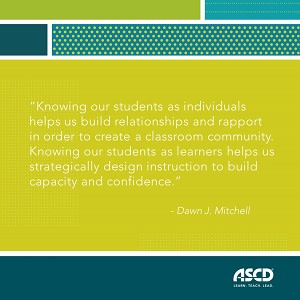Those of us in mathematics often have to look hard to find appropriate and meaningful inclusion of our discipline in STEM programs and activities. With a surge in interest in STEAM lately, I’ve been reflecting on where the “A” fits in. Do the arts belong in programs emphasizing science, technology, engineering, and mathematics? Or, is the STEAM movement just an attempt to save the arts from dwindling attention in many school programs?
As a career mathematics educator, I believe both the arts and mathematics are essential to providing students with a broad, well-balanced education.
Beginning at the end of the twentieth century and continuing today, we have seen a call for increasing the emphasis in schools on STEM. Business leaders and policy makers, among others, have decried the shortage of workers with strong skills in STEM fields who can tackle the significant challenges of creating solutions to problems within a rapidly changing global marketplace. Employers desperately need workers at every level of education who can think creatively, work together to solve problems, and generate the next innovation. They see STEM as an important tool in reaching such a goal.
Even beyond the need for STEM-knowledgeable workers, society also needs a STEM-literate population. Wherever we turn, we can see an increased need for every member of society to be able to call on quantitative reasoning and scientific literacy just to make sense of the issues facing us all on a daily basis. From health care to the economy to personal debt and the spread of the flu, the need to understand mathematics and science underlies all of our lives.
In K-12 education, the foundation of a strong STEM program is teaching math and science well. A danger we face in schools, however, is putting so much emphasis on these fields that we lose sight of the importance of giving students breadth and balance in their education. More and more school systems are increasing emphasis on a few subjects at the expense of programs in the arts.
If innovation and creative problem solving are increasing in importance for both employers and individuals, where do students learn such skills? One obvious answer is to offer all students experience with the arts. Within the arts, students learn to expand their minds beyond routine procedures or lists of facts and skills. They learn to not only communicate their ideas and express themselves in many different forms, they also learn to push beyond what they already know to create something new, appreciate a novel approach, or interpret something from a different perspective.
I would argue that these skills are not only important for students to develop as they engage in the arts, but also that we can learn from the arts and incorporate creativity and innovation in how we teach mathematics. My own experience in school included a significant turning point in seventh-grade. Throughout my elementary years, I had been an average student in mathematics, which consisted primarily of arithmetic. I didn’t much care for the subject. But in Mr. Bender’s seventh-grade math class, I was introduced to a beautiful world of mathematics that expanded well beyond arithmetic. We created geometric drawings that allowed us to express ourselves in unique ways and we solved problems that challenged our thinking and pushed us for creative approaches. My mind expanded and the seeds planted that year have continued to grow and flourish throughout my life.
Beyond my own small adventures in mathematical creativity, we have seen throughout history examples of far more elegant connections between art and mathematics. From Leonardo DaVinci’s mathematics-infused creations to M. C. Escher’s mind-bending drawings to Henry Segerman’s or Bathsheba Grossman’s more recent mathematical sculptures to a long list of artists who call on—or connect to—mathematics, we can see deep and powerful reminders of how these disciplines which on the surface seem so different can, in fact, reinforce each other. And when Wynton Marsalis talks about the geometry within his jazz or we read of Albert Einstein’s proficiency with the violin and piano or we listen to a piece of music created on a computer, we are reminded that perhaps the links between the arts and STEM fields are more natural than we might have thought.
Too often, the way we have taught mathematics has communicated to many students that math is about remembering one way to solve a particular kind of problem. We have rewarded students who were good at listening to the teacher and giving back what they had learned on tests where they saw problems like the ones the teacher had shown. Fortunately, today we can see a very different kind of math teaching in many schools.
More and more math classrooms are focusing on helping students think creatively. We see teachers organizing classrooms around deep, rich tasks that allow students to approach a problem from different directions and promote creative solutions. Teachers are acknowledging students’ thinking, even if it takes a different direction from what the teacher might have expected. We value students being able to represent problem situations and mathematical relationships in many ways—words, pictures, diagrams, tables, graphs, and symbols. Students think in different ways, and we now know that there is not just one way for a student to succeed in mathematics.
For teachers, I encourage you to embrace students’ unique approaches to problems. A student who sees herself or himself as more of an ‘artsy’ person than a ‘mathy’ person could be encouraged to express her/his creativity in approaching a math problem. There’s no reason why any student shouldn’t be able to use his or her strengths as tools for accessing mathematics.
Too often, those of us in mathematics have experienced the negative reaction to our subject by people we encounter in social situations. Maybe it’s time for us to embrace creativity and artistic expression as we help our students see the beauty and elegance within mathematics even as we support our colleagues in the arts.








